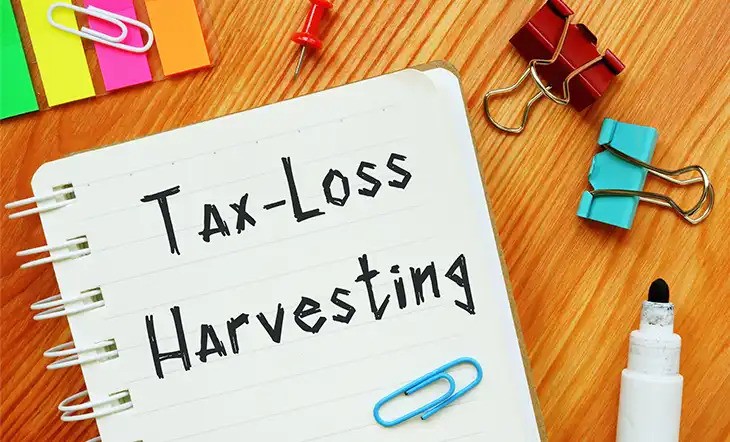How Does a Deferred Retirement Option Plan (DROP) Work?

The word retirement is being seen in an entirely new light off late. Some people are retiring early in their 40s under the Financial Independence Retire Early (FIRE) movement. And others are unwilling to retire even in their 60s. There is no fixed rule to retirement anymore and employees have the freedom to choose when they get to begin the golden years of their life.
Moreover, while retirement is commonly referred to as the golden years, it may not necessarily hold the same connotation for everyone. A lot of people find the transition to retirement hard. This is why they continue to work beyond their retirement years. Working beyond retirement can be beneficial for a number of reasons. You can continue earning an income and hence enjoy better financial security in your old age. You also stay busy and productive that leaves a positive impact on your mind and overall health. Social and professional interactions and friendships also add value to your life. However, your retirement account contributions and distributions may end up being a little tricky to manage if you continue to work beyond the retirement age. Your taxability can be impacted and you may no longer be able to contribute to a defined benefit plan after maxing out your contributions. Deferred Retirement Options Plans can be a suitable way out here.
Deferred Retirement Options Plans (DROPs) are the perfect answer for public sector employees who wish to continue working past the official retirement age. These plans can benefit the employee as well as the employer with numerous advantages. To know more about DROPs, consult with a professional financial advisor who can explain if the retirement strategy is useful for your financial needs. Keep reading to find out more DROP retirement plans and how they can be used.
What are DROP pension plans?
DROP retirement plans were introduced in the 1980s. The DROP program enables an employee to keep working even though they may have reached the retirement age. Typically, when an employee works, their working years are added to their years of service. This, in turn, increases their pension benefit amount. However, in the case of the DROP program, the employer puts a lump sum amount in a separate account for every year the employee works. This account earns interest for the years the employee is still working. When the employee decides to retire, the entire amount of money in the account is paid to the employee along with any additional pension benefits. When introduced in 1980, these plans were originally designed for public sector employers. However, over time, they were also offered to police officers, teachers, firefighters, as well as civil servants.
Who can use a DROP retirement plan?
In order to use a DROP retirement plan, you must meet the following eligibility criteria:
- You must have a defined benefits retirement plan from your employer, like a fixed pension plan.
- You should be of retirement age but still working post-retirement.
How are the DROP program benefits calculated?
The calculation of a DROP benefit plan can differ for different employers. However, most employers consider the following factors while calculating the benefits:
- Period of participation: There is a participation limit for each DROP retirement plan, and you cannot use the plan for an indefinite period. The period of participation can vary for each employer. For instance, as per the San Diego City Employees’ Retirement System, you can participate in a DROP program for a maximum of five years. Hence, make sure to confirm the participation limit from your employer before you opt for this plan.
- Payment amount: The payment amount refers to the amount of money your employer is willing to contribute to your DROP account. This may or may not be the same as the retirement benefits you would ideally get if you retire. And the decision for the same lies with the employer.
- Interest: This is the interest that is gained on the lump sum contributions put into your DROP account by the employer. The rate of interest is also determined by the employer.
- Benefits like health, disability, worker’s compensation, etc.: If you have been receiving any benefits or compensation for health, disability, etc., they may not continue if you opt for a DROP retirement plan. This is primarily because these benefits are only provided until retirement, and your employer may categorize you as a formally retired employee who is still working on the DROP account. It may be advised to discuss this with your employer too.
- Disbursement: Most DROP pension plans offer a lump-sum payment upon retirement. Retirement here does not refer to your official retirement age. Instead, it is the year when you finally decide to stop working completely. Some employers may also offer regular income payments over time instead of a lump sum pay out.
- Taxes: The money you receive from a DROP retirement account is added to your taxable income for the year. However, you have the option to roll it over to an IRA (Individual Retirement Account) or another employer plan that allows a rollover.
Here is an example of how the DROP account benefits are calculated. Consider a scenario where a public sector employee retires at the age of 60 after working for 30 years. The employee selects a DROP plan with a participation limit of 5 years. The accrual rate of interest for the plan is 2.5%. The employee retired at a salary of $40,000. In this case, the employee will get the total of $40,000 x 2.5 x 30 years = $30,000 in a year. If the participation limit is 5 years, the employee will earn a maximum of $ 3,00,000 in the DROP retirement account as a whole.
What are the benefits of using the DROP program?
DROP retirement plans can offer several benefits to both the employer as well as the employee:
Benefits of DROP pension plans for employees:
- Employees can keep working for an extended period of time. This makes it easier to transition into retirement.
- Employees can be productive and stay busy, and use their physical and mental abilities for better health and well-being.
- Employees can earn more money and enjoy a safer retirement financially.
- Employees may earn more in comparison to a defined benefit plan.
- Employees who have maxed out their contributions to a defined benefit plan can use a DROP program to increase their retirement corpus.
Benefits of DROP pension plans for employers:
- Employers can keep valued employees in their organization for a longer time and benefit from their productivity.
Disadvantages of DROP pension plans for employers:
- The enrollment period for some DROP pension plans is quite short.
- Employees may find themselves at a higher tax bracket because of their earnings from a DROP retirement plan. This can especially be the case for lump sum withdrawals.
How is a DROP retirement plan taxed?
A DROP retirement plan is taxed as your ordinary income, depending on the tax slab you fall into. However, the taxability may differ based on how you choose to receive your income at the time of withdrawal. When you quit the workforce for good, you can consider the following four options:
- Take a lump pay out from your DROP account: You can take a lump-sum pay out from your DROP account upon final retirement. In this case, your entire accumulated money will be paid to you in full. This can put you in a higher tax bracket and increase your taxability by a significant margin.
- Take small payouts from your DROP account: You can also opt for smaller, regular payment methods that pay you monthly or yearly over a period of time. This can help you reduce your tax output compared to the lump-sum method. However, you will still pay tax on the money in the year you receive the payout.
- Roll over your DROP account to an IRA: An IRA rollover can be made to a Roth or traditional IRA. The taxability, in this case, will be deferred until you withdraw your funds from the IRA. This can be suitable for people who wish to delay paying the tax for a while.
- Roll over your DROP account to an employer plan that offers a rollover: You can also roll over your DROP retirement account to any other employer plan that enables a rollover. The tax output will be more or less similar as in the case of an IRA and depends on the taxability rules of the chosen employer plan.
To conclude
Deferred retirement options plans can be a good option for people who wish to continue working well past retirement. It can also benefit employers in several ways. Hence, these plans are preferred by both parties. However, the suitability of these plans for each individual can only be determined based on your retirement income, tax bracket, and reason for wanting to work more. No matter why you choose a DROP account, you must pay attention to the taxability of your account at the time of maturity. The retirement account should help you earn money and not lose money to taxes. So, make an informed decision after understanding all the pros and cons. It is also important to know the terms and conditions of the employer before you pick a plan and see how the interest and participation limit fit into your retirement planning strategies.
If you need a professional’s opinion on how deferred retirement options plans work and whether or not they are a good option for you, you can get in touch with a financial advisor in your area. Use the free advisor match tool to get matched with 1-3 qualified financial advisors who are suited to meet your needs and goals.







.jpg)













.jpg)





.jpg)


.jpg)


.jpg)















.jpg)






.jpg)



.jpg)


.jpg)






.jpg)

.jpg)






.jpg)



.jpg)

.jpg)



.jpg)




.jpg)

.jpg)
.png)

.jpg)




.jpg)
.jpg)

.jpg)



.jpg)

.jpg)

.jpg)
.jpg)
.jpg)

.jpg)

.jpg)




.jpg)


.jpg)

.jpg)

.jpg)

.jpg)
.jpg)
.jpg)
.jpg)

.jpg)




.jpg)
.jpg)


.jpg)
.jpg)
.jpg)
.jpg)

.jpg)
.jpg)














.jpg)




.jpg)

.jpg)





.jpg)









.jpg)



